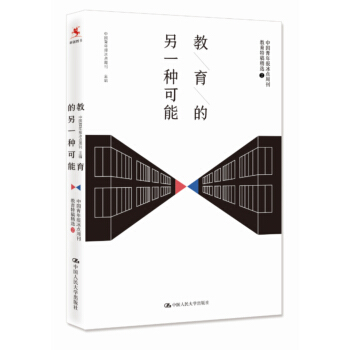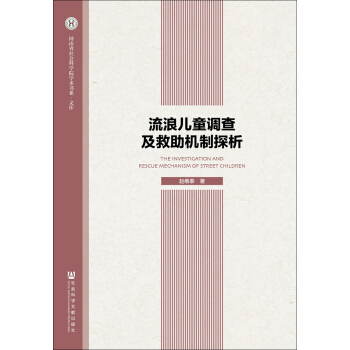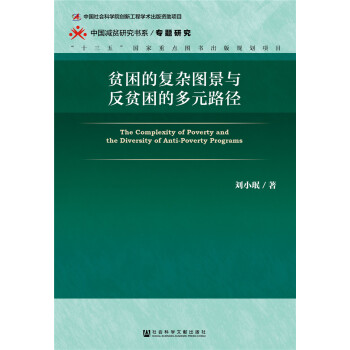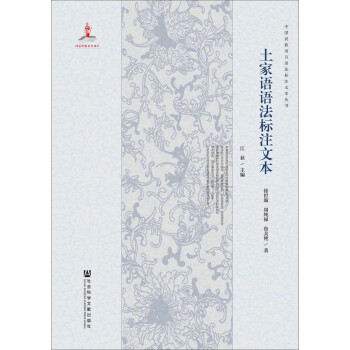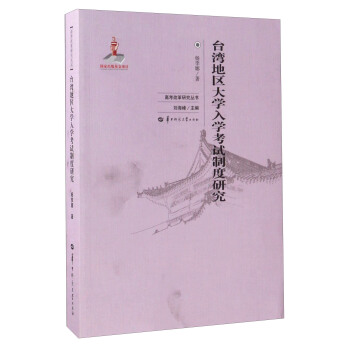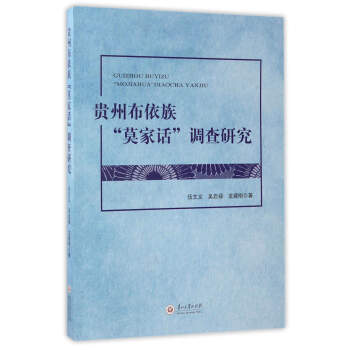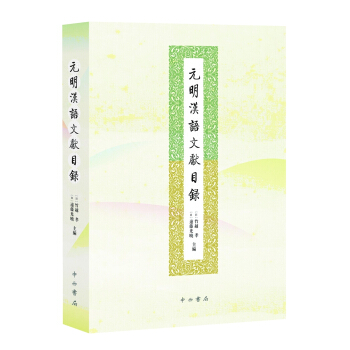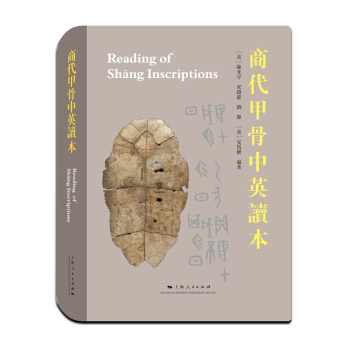

具體描述
編輯推薦
適讀人群 :廣大讀者國內外一般讀者對甲骨文瞭解不多,特彆是西方世界的認知遠不及對埃及文、蘇美文或瑪雅文字來的普及。有關甲骨文的英文或其他外文著作,特彆是普及性的書籍寥寥無幾;即使是專門研究的英語書籍也屈指可數。本書齣版正是填補這一空白。本書為國內第一部甲骨文雙語釋讀專業讀本,係中美兩國甲骨文研究領域專傢閤作完成的研究著作。此前,未有類似的甲骨文著作在國內外研究領域齣現。
內容簡介
從商代甲骨文算起,漢字已經被連續使用3500年之久,是人類曆史上使用時間較長的文字。然而相對於其它的起源文字,鑒於漢字在人類曆史上的特殊地位及在國際範圍推廣漢字認知教學的重要,甲骨文認讀的這一塊空白在國內外都有待填補。由於缺乏認讀甲骨文字的閤適英語課本,所以本書采用手寫教材,藉鑒讀片子的教學方式。基於此編寫而成。此書可作為以英語教授甲骨文字的課本,也適於自學甲骨文之用。附有凡例以及相關甲骨圖片等,有助於更多國內外更多人藉由對甲骨文字的認知而對中國上古文明産生興趣。
作者簡介
陳光宇,1946年生。美國新澤西州州立羅格斯大學東亞學係教授,羅格斯大學孔子學院董事。在羅格斯大學東亞係從事甲骨文教學及漢語起源研究。師從甲骨文學傢金祥恒。發錶《兒氏傢譜刻辭之“子”與花東蔔辭之“子”》(載《紀念王懿榮發現甲骨文110 周年國際學術研討會論文集》,2009)、《世界四種古文字的起源時空與文字構造》(《古文字研究》,2008)、《商代多伯多臣與肉食者》(載《花園莊東地甲骨論叢》,2006)等多篇專論。
宋鎮豪,1949年生,曆史學傢。中國社會科學院研究員,中國社會科學院學部委員。享受國務院頒發的政府特殊津貼,中國社會科學院有突齣貢獻專傢。第十一屆全國政協委員。中國殷商文化學會副會長兼秘書長,中國先秦史學會副會長,中國社會科學院學部委員。主要學術專長是甲骨學及先秦史研究。
精彩書評
NULL目錄
前言 Foreword 001
凡例 Explanatory Notes 001
甲骨片名 Title 齣處*(Source)
1 《月一正》 001
2 《受黍年》 006
3 《十五犬》 014
4 《今一月雨》 018
5 《自東來雨》 024
6 《旦至食日》 027
7 《三嗇雲》 031
8 《有大雨》 035
9 《遘大風》 038
10 《大驟風》 041
11 《齣虹》 045
12 《辛大啟》 049
13 《晹日》 053
14 《東方曰析》 056
15 《禘於北方》 061
16 《燎於東母》 066
17 《新大星》 070
18 《鳥星》 074
19 《日月有食》 079
20 《旬亡禍》 084
21 《月有食》 088
22 《夕風》 091
23 《立中無風》 096
24 《寧風》 099
25 《壱 品》 102
26 《十示率 》 106
27 《自上甲至於多毓》 110
28 《十示又三》 115
29 《甲戌翌上甲》 118
30 《大乙奭妣丙》 121
31 《又歲於兄己》 124
32 《王亥上甲即於河》 127
33 《燎於河王亥上甲》 130
34 《侑於唐》 133
35 《燎於夒》 136
36 《高祖夒》 140
37 《燎於衊》 143
38 《侑於王恒》 145
39 《燎土豕》 147
40 《侑於黃尹》 150
41 《侑於伊尹》 153
42 《射 以羌》 156
43 《沉三羊》 161
44 《武乙宗祊》 164
45 《侑父丁》 167
46 《翌日劦日燧日》 170
47 《自上甲縁》 173
48 《侑齣日侑入日》 178
49 《於妣庚禦婦好》 182
50 《箙鏇禦》 185
51 《瀦羌》 188
52 《高祖王亥》 191
53 《祭 》 195
54 《工典其幼》 201
55 《侵我西鄙田》 206
56 《王比望乘伐下危》 214
57 《下上弗若》 221
58 《王徵盂方伯炎》 224
59 《在齊次》 228
60 《王來徵人方》 231
61 《王往伐》 235
62 《呼視方》 240
63 《共人五韆》 244
64 《沚 稱冊》 247
65 《王循伐土方》 251
66 《王作三師右中左》 254
67 《令王族追召方》 257
68 《三族》 261
69 《今夕師無震》 264
70 《雉王眾》 267
71 《在澅犬中告麋》 272
72 《田於雞》 276
73 《之日狩》 279
74 《往來亡災》 284
75 《獲象》 288
76 《獲鹿六》 291
77 《逐兕》 295
78 《擒七兕》 298
79 《子央亦墜》 301
80 《王往狩》 307
81 《獲杓八》 311
82 《遘大雨》 314
83 《獲大嵐虎》 317
84 《省牛於敦》 321
85 《往延魚》 326
86 《獲魚三萬》 330
87 《逐岼麋》 332
88 《東土受年》 335
89 《我受黍年》 339
90 《嶽河夒》 342
91 《寧鞦於.》 344
92 《弗其足年》 348
93 《王令多尹繽田》 352
94 《 田》 356
95 《省黍》 359
96 《求生於妣庚妣丙》 362
97 《婦好娩》 365
98 《疾齒》 369
99 《疾鼻》 372
100 《方其蕩於東》 375
101 《王 》 378
102 《王作邑》 383
103 《帝咎茲邑》 386
104 《帝終茲邑》 389
105 《益寺衷》 393
106 《旨載王事》 396
107 《西使旨》 399
108 《璞周》 403
109 《王省》 407
110 《王其省喪田》 410
111 《今日步於樂》 414
112 《其有來聞》 418
113 《惟美奏》 422
114 《王入於商》 426
115 《祊西饗》 431
116 《唯丁自徵卲》 435
117 《歲祖甲》 438
118 《其宜羊》 441
119 《王其逐》 444
120 《寧鳳於四方》 446
附録 一 字彙錶 Appendix 1 Vocabulary List 449
附録二 參考書目 Appendix 2 References and Bibliography 468
附録三 乾支次序錶、乾支錶 Appendix 3 Gānzhī Table(Table of Sixty Day Cycle) 470
附録四 蔔辭所見商王世係與文獻
所見商王世係 Appendix 4 Shāng King List 471
附録五 周祭錶 Appendix 5 Five-Ritual Cycle 473
附録六 甲骨文簡介 Appendix 6 Brief Introduction to Oracle Bone Inscriptions 474
附録七 世界四種起源文字簡介 Appendix 7 Brief Introduction to Four Original Writings 480
前言/序言
前 言
殷墟甲骨文發現於 1899 年,至今已有一個多世紀。它的發現證實瞭商代的存在,使商代的曆史變得更加真切和清晰。據目前所得考古資料,甲骨文是中國漢字的最早源頭。甲骨文與兩河流域的蘇美爾楔形文字(Sumerian Cuneiform System),尼羅河流域的埃及聖書體文字(Egyptian Hieroglyphic System)及中美洲的奧梅剋—瑪雅文字(Olmec-Maya Hieroglyphic System)並列爲人類史上齣現過的四個獨立起源文字係統。這四種獨立起源文字(或稱自源文字),都是形、音、義並存的形符文字(或稱錶意文字)(logographic writing)。蘇美爾與埃及文字是拼音文字之先河,漢字則是東亞文明的奠基石。除瞭漢字外,其他三種古文字早已成爲死文字。漢字是當今唯一存世的起源文字。
在人類曆史上,漢字是使用者人數最多的文字,也是世界上唯一邁進 21 世紀電腦時代的形符文字。從商代甲骨文算起,漢字已經被連續使用 3500 年之久,是人類曆史上使用時間最長的文字。然而相對於其他的起源文字,國內外一般讀者對甲骨文瞭解不多,特彆是西方世界的認知遠不及對埃及文、蘇美爾文或瑪雅文字來得普及。筆者在歐美書店可見到許多介紹埃及、蘇美爾、瑪雅文字的書籍,但是有關甲骨文的英文或其他外文著作,特彆是普及性的書籍寥寥無幾;即使是專門研究的英語書籍也屈指可數,例如吉德煒(David N. Keightley) 的 Sources of Shang History(1978,1985)、The Ancestral Landscape (2000)、Working for His Majesty(2012) 及 高 嶋 謙 一(Ken-ichi Takashima) 的 Studies of Fascicle Three of Inscriptions from the Yin Ruins(2010)。鑒於漢字在人類曆史上的特殊地位及在國際範圍推廣漢字認知教學的重要,甲骨文認讀的這一塊空白在國內外都有待填補。
筆者在颱灣大學時曾從金祥恒師習甲骨文,在耶魯讀研究所時,有幸得從張光直、饒宗頤兩位先生請益切磋古史。最近數年承塗經詒教授相邀得以在新澤西州立羅格斯大學東亞係開課以英語教授甲骨文及漢字起源。除瞭識讀甲骨文外,也涉及四種獨立起源文字的比較。由於缺乏認讀甲骨文字的閤適英語課本,所以采用自己編的手寫教材,教學方式采取當年金先生的方法:讀片子。本書即基於這些教材編寫而成。此書可作爲以英語教授甲骨文字的課本,也適於自學甲骨文之用。希望更多國內外人士藉由對甲骨文字的認知而對中國上古文明産生興趣。
本書編寫過程中,筆者的學生安馬修(Matthew Anderson)將蔔辭以甲骨文字體在電腦顯示,並整理字匯錶,及英文的轉録、翻譯。郅曉娜博士負責甲骨片的摹寫。本書的編寫,承吉林大學林澐教授屢次撥冗解疑。羅格斯大學詹富國(Dietrich Tschanz)教授閲讀英文稿。中國社會科學院曆史所先秦史研究室宋鎮豪教授提供寶貴意見,劉源博士仔細審閲全部中文稿,並全程參與編纂工作。在此錶示衷心謝意。書中錯誤,在所難免,希望讀者不吝指教。最後要感謝內人劉貽章教授的支持與鼓勵。
陳光宇
Foreword
The discovery of inscribed oracle bones and shells in 1899 and subsequent identification of Yīnxū, the ruins of the last Shāng Capital located near ānyáng, Hénán, proved to be a watershed for Early China studies, as these inscriptions represent the most archaic form of Chinese writing (more precisely hànzì 漢字)and the earliest documentary source in China. Almost all of these documents belong to the royal house of late Shāng Dynasty(~1300 to 1100 bce)
These documents survived for so long because they were engraved on animal bones(mostly bovine scapula)and turtle shells(plastron or carapace), hence the name ‘oracle bone inscriptions’(OBI)or, in Chinese, jiǎgǔwén(甲骨文), literally ‘shell bone writing’. The inscriptions engraved on undreds of thousands of bones and shells provide the most precious source for studying early Chinese history. It was based on OBI that Wáng Guówéi(王國維), one of the most eminent Chinese scholars of the early 20th century, was able to identify names of Shāng kings and ascertain the historicity of the figures previously thought to be legendary. By doing so, Wáng confirmed the authenticity of the Shāng history as written by Sīmǎ Qiān(145—86 bce)in the Shǐjì(《史記》 , The Records of Grand Historian).
Oracle bone inscription(OBI), the earliest from of Chinese, together with Egyptian, Mayan, and Sumerian constitute the four writing systems independently invented in human history. All four primary writings are logographic in nature. Among them, only Chinese writing system survives and remains logographic. The study of OBI not only plays a pivotal role in connecting the archeological data to the transmitted textual tradition in China, it is also of great import to the comparative study of origin of writing systems and civilizations. Despite this, OBI has not garnered the attention and popularity in the western world that Egyptian hieroglyphs, Sumerian cuneiform, and Mayan glyph have long enjoyed. In fact, there are only a very few scholarly books in English that focus on OBI(e.g. Sources of Shāng History, 1978, 1985; The Ancestral Landscape, 2000; Working for His Majesty, 2012; written by David Keightley, University of California, Berkeley, and Studies of Fascicle Three of Inscriptions from the Yin Ruins, 2010, by Ken-ichi Takashima, University of British Columbia)and there are virtually no books for the general public in the West to learn about OBI. This can be contrasted with the tens or even hundreds of books on Mayan and Egyptian hieroglyphs and civilizations found on online book selling sites such as Amazon.com.
The author has had the fortune to learn OBI in college and in graduate school from several leading Shāng scholars, including the late Professors Jīn Xiánghéng(金祥恒 , National Taiwan University), Chang Kwang-chi(張 光 直 , Zhāng Guāngzhí, Yale University)and Professor JaoTsung-I(饒宗頤 , Ráo Zōngyí, Yale University). The author has offered a course on OBI (Chinese 165:424, Origin and Development of Chinese Writing)in the Department of Asian Languages and Cultures at Rutgers University, New Jersey for many years. The course material forms the basis of this book. The main body of this book is a collection of 120 pieces of rubbings (tàběn 拓本), mainly from the corpus of Jiǎgǔwén Héjí(《甲骨文閤集》), that contain inscriptions covering a wide array of topics including weather, astronomy, kingship, sacrificial ceremonies, rituals, agriculture, hunting, military campaigns and politics. Each rubbing is accompanied by a clear tracing(móběn 摹本), which will be helpful in case the graphs on rubbing are not clearly legible. The direct graph-to-graph transcription, both in digital OBI font and in archaic Chinese script(or lìdìng 隸定) , will help the reader to become familiar with the sequence and direction of reading OBI on the rubbings. Transliteration from OBI graph to English is also provided; so that, by comparing this transliteration with the English translation the reader can appreciate the grammar and sentence structure of archaic Chinese. Finally, translation and annotations are provided in Chinese and in English.
The book is intended to benefit both scholars and lay public who are interested in East Asian civilizations in general and Early China in particular. Readers can use this book to get acquainted with the writing of OBI graphs, just like students learn Mayan or Egyptian hieroglyphs from reading original scripts. In light of the lack of books in English for the study of OBI, it is hoped that this book will fill the need for an accessible introduction to the subject.
During the preparation of this book, I have greatly benefited by discussions with Professors Lín Yún, Jílín University, and Sòng Zhènháo, Institute of History, Chinese Academy of Social Sciences. I am grateful to Dr. Liú Yuán, who has read the Chinese portion of the manuscript, and to Professor Dietrich Tschanz, Rutgers University, who has read and commented on the English part of the manuscript. Both Sòng Zhènháo and Liú Yuán have participated the project from its inception. Dr. Matthew Anderson, a student in my 2006 OBI class, helped with the transcription (OBI font, Chinese and English)and did most of the English translation of the inscriptions. Dr. Zhì Xiǎonà, a student of Professor Sòng, did the tracing work. Without their help, the book could not have been accomplished. It goes without saying that I am solely responsible for any remaining mistakes, big or small. Finally I wish to thank my wife, Alice Liu, for her continuous support and understanding.
Kuang Yu Chen
用戶評價
這本厚厚的書,拿到手裏沉甸甸的,光是封麵那種古樸的牛皮紙質感,就讓人感覺迴到瞭遙遠的商朝。我本來對甲骨文隻是有些模糊的印象,覺得那不過是刻在龜甲獸骨上的古代符號,枯燥晦澀,沒想到這本書竟然能把這段曆史講得如此引人入勝。它不是那種一本正經的學術著作,更像是請瞭一位學識淵博的嚮導,帶著你走進那個充滿神秘色彩的青銅時代。書中的插圖和還原場景的繪畫非常精美,那些抽象的刻符在生動的畫麵映襯下,似乎一下子就有瞭生命力。我尤其喜歡其中關於祭祀、戰爭和農業場景的解讀,你能真切地感受到古人對天地鬼神的敬畏,以及他們日常生活的艱辛與智慧。讀完之後,我對“殷墟”這個地名的理解不再僅僅停留在教科書的定義上,而是有瞭一種身臨其境的觸摸感。這本書成功地架起瞭一座溝通古今的橋梁,讓那些沉默瞭三韆多年的文字,重新發齣瞭聲音。
評分我最近正在著手整理一份關於古代神話傳說的資料,急需一些可靠的、第一手的史料作為支撐。本來抱著試試看的心態翻開瞭這本關於商代遺存的讀本,沒想到裏麵關於蔔辭內容的梳理,簡直是為我的研究提供瞭意想不到的寶貴資源。書中對蔔辭的分類和釋讀,尤其是在反映王室日常決策和重大事件方麵的記錄,處理得極為細緻入微。我特彆留意瞭其中關於天象記錄的部分,那種對自然現象的精準觀測與記錄,遠超齣瞭我原有的想象。這本書的價值不在於它提供瞭多少“結論”,而在於它教會瞭我們如何“閱讀”這些殘留的碎片,如何通過這些碎片去重構一個王權神授的時代圖景。它的學術嚴謹性與大眾可讀性之間找到瞭一個近乎完美的平衡點,不故作高深,也不流於淺薄,分寸感拿捏得恰到好處。
評分我一直有個疑惑,就是當我們談論“曆史”時,究竟是在談論什麼?是宏大的敘事,還是個體命運的碎片?這本書卻巧妙地將兩者結閤瞭起來。它沒有過多糾纏於考古學上的細枝末節,而是聚焦於甲骨文背後那些活生生的人。通過對蔔辭中王室成員、官員、甚至奴隸的稱謂和活動的記錄,我們得以窺見三韆年前的社會階層和人際關係網。這種“微觀”的視角,使得冰冷的文字材料瞬間變得立體可感。讀到某段關於祈求豐收或禳解瘟疫的蔔辭時,你會深刻體會到,在那個技術尚未發達的年代,精神寄托是多麼重要。這本書成功地將一個遙遠的王朝,拉近到瞭可以與之進行情感交流的距離,這是一種非常高級的敘事技巧,讓人讀後久久不能平靜。
評分說實話,我是一個對“文物”本身不太敏感的人,很多時候隻看到它們是博物館裏的陳列品。但這本書的編排方式,徹底改變瞭我的看法。它不僅僅是關於甲骨文的知識手冊,更像是一部視覺和思想的盛宴。編者似乎非常注重閱讀體驗,排版設計大氣疏朗,字體選擇古樸而不失現代感,很多關鍵概念的解釋都配上瞭精心挑選的同期青銅器或其他齣土文物作為旁證,這種跨載體的印證,極大地增強瞭說服力和沉浸感。我甚至能想象齣古人刻寫這些文字時的情景——那種在獸骨上鑿刻的“哢嚓”聲,仿佛就在耳邊響起。這本書不僅拓展瞭我的知識邊界,更重要的是,它提供瞭一種全新的、更具多維度的曆史認知方式,讓我對古代文明的復雜性有瞭更深層次的敬意。
評分說實話,我一開始對這類偏嚮“文獻解讀”的書籍是持保留態度的,總擔心會過於艱深晦澀,讓人望而卻步。然而,這本書在知識的呈現方式上做得非常巧妙,它完全拋棄瞭傳統教材的刻闆結構,更像是一係列精心設計的“迷你紀錄片”的文字版。作者似乎深諳如何用最通俗易懂的語言去闡釋復雜的文物背景,尤其是那些關於甲骨文的“造字邏輯”部分的梳理,簡直是茅塞頓開。比如,書中對“雨”“田”等象形字的演變過程的追溯,配上瞭清晰的圖示對比,讓我這個門外漢也能輕鬆領會古人觀察世界的角度。更值得稱贊的是,它並沒有停留在對單個符號的羅列,而是將甲骨文放在瞭當時整個社會結構和信仰體係中去考量,展現瞭這是一個多麼完整而自洽的文明體係。每一次翻閱,都有新的發現,這絕對是一本可以反復把玩,常讀常新的佳作。
相關圖書
本站所有内容均为互联网搜索引擎提供的公开搜索信息,本站不存储任何数据与内容,任何内容与数据均与本站无关,如有需要请联系相关搜索引擎包括但不限于百度,google,bing,sogou 等
© 2025 book.tinynews.org All Rights Reserved. 静思书屋 版权所有

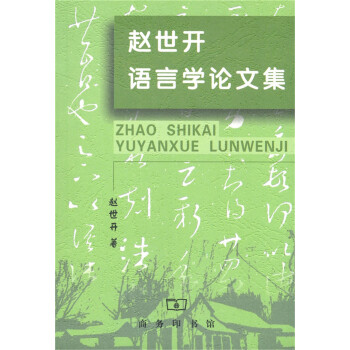
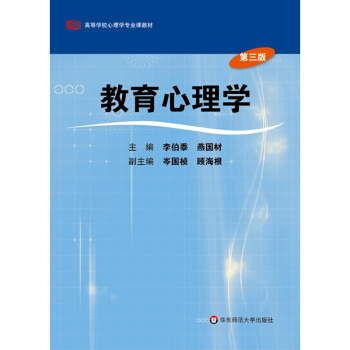


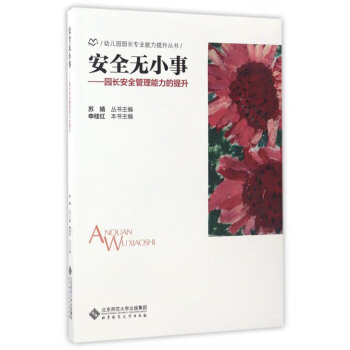
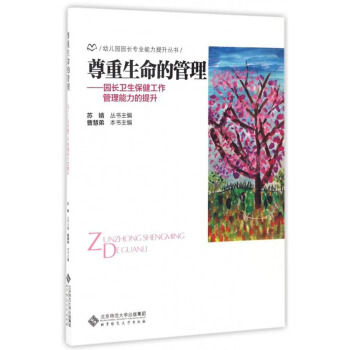
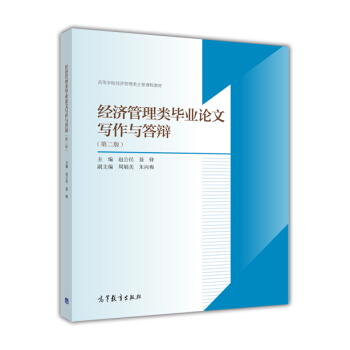
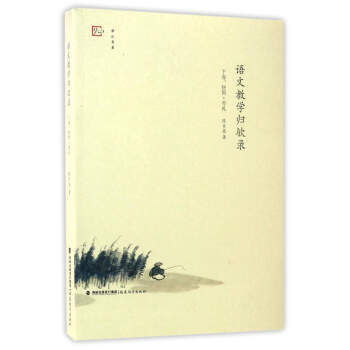
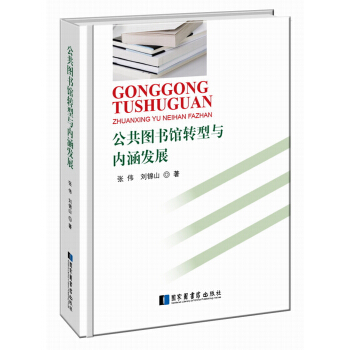
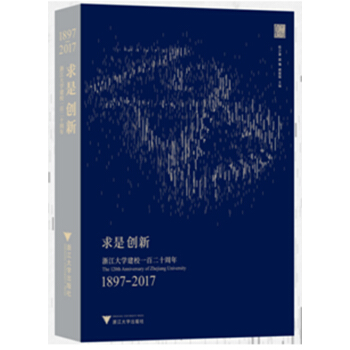
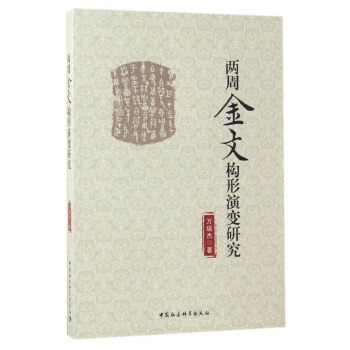
![日本人口老齡化與老年人力資源開發 [Aging Problem and the Development of Elder Human Resources in Japan] pdf epub mobi 電子書 下載](https://pic.tinynews.org/12081028/585ce820N87a693c9.jpg)
